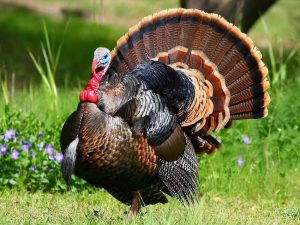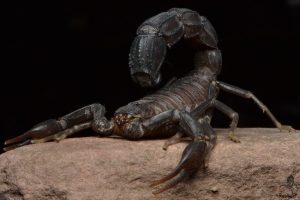The Axolotl is currently seen as an animal with prehistoric characteristics; they look very unique and captivating. They are a very popular choice for many people to keep as a pet. If you’re interested in this species and want to know “How much does an axolotl cost? What do they eat? How do I care for them?”, then this article from KnowAllAnimals will give you the most detailed answers.
Scientific Classification
- Kingdom: Animalia
- Phylum: Chordata
- Class: Amphibia
- Order: Urodela
- Family: Ambystomatidae
- Genus: Ambystoma
- Species: A. mexicanum
1. Introduction to the Axolotl
The axolotl, also called the Mexican walking fish or “six-horned dragon,” has the scientific name Ambystoma mexicanum. They are one of the few species that retain their juvenile traits into adulthood. This species is now a very popular pet due to its unique physical characteristics. They are found in large numbers primarily in the Mexico region.
However, as of 2010, the wild population of this species was in serious decline and faced the risk of extinction. The main causes were urbanization in Mexico, water pollution, and the invasion of other species, especially carp and tilapia.
1.1. Origin of the Axolotl
As we mentioned, the main origin of this animal is Mexico, and they were found in large numbers in the lakes of Xochimilco, Chalco, and the Valley of Mexico. However, due to urbanization, the habitat of these axolotls has been severely reduced, causing their numbers in the wild to decline sharply. They are now at risk of extinction.
Currently, there are very few axolotls left in the wild. However, many studies have been conducted to increase their population worldwide. Today, many people choose to raise this species in their home aquariums.
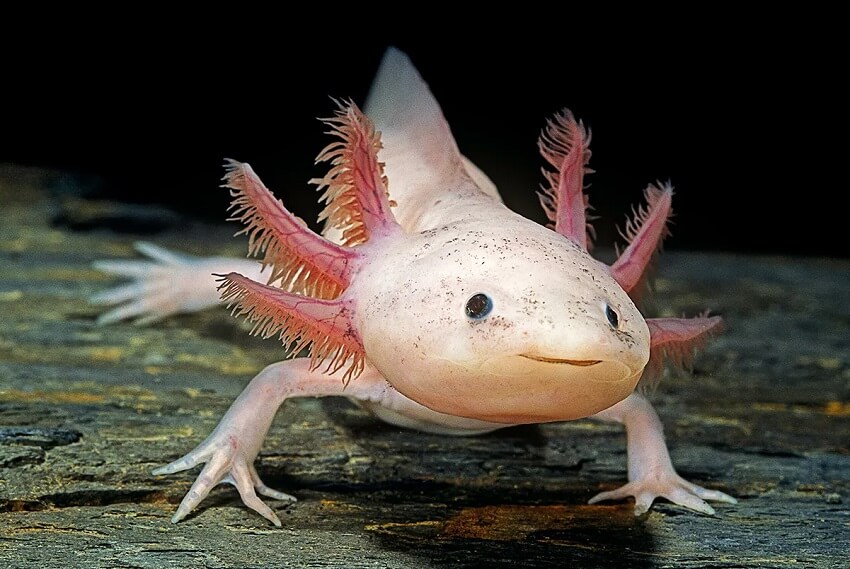
1.2. Physical Characteristics of the Axolotl
The Mexican axolotl has a very unique and impressive appearance. At first glance, they look like dragons from a legend. Their entire body is covered in skin with very small scales. Their primary colors can be brown, white, gray, albino, blue, or light pink. In addition, many of them have white or black spots on their bodies, which makes them stand out even more.
An adult axolotl can reach a size of 15–45 cm (6–18 inches), but the average size for this species is mainly 23–30 cm (9–12 inches). They have a pair of large, round, usually black eyes on their head and the characteristic wide mouth of an axolotl.
The most notable feature of the Mexican axolotl is its large head with many horns. However, these “horns” are actually called gills by experts. They have three pairs of gills, six in total, that grow out from both sides of their head like horns. These gills have a very special function, helping the axolotl exchange oxygen more easily while swimming.
In addition, they have four small legs on both sides, similar to many other salamanders. They also have a long tail with a wide top and bottom fin, which helps them move gracefully in the water.
1.3. Axolotl Behavior
This species has a fairly aggressive nature, and they often fight fiercely to compete for food and territory. However, they have a very good ability to regenerate parts of their body such as their tail, legs, fins, and gills. If they get injured during a fight, these body parts will grow back to their original state after about one month and will still function as before.
1.4. How Do Axolotls Reproduce?
The breeding season for Mexican axolotls starts from late winter to early spring each year. This is the ideal time, as the temperature is warm and there is a plentiful supply of food for the young to develop well. When they mature and reach an age of about 11 months, they will have their first breeding season. In a single breeding cycle, a female can lay anywhere from 60–500 eggs. They will choose grassy areas or rock crevices near the water to lay their eggs.
In the wild, when the temperature is maintained steadily at below 23 degrees C (73.4 F), the hatching rate is about 85%. However, as the weather and climate continue to change, the hatching rate for axolotl eggs is in serious decline.
1.5. What Do Axolotls Eat?
The axolotl is a carnivorous reptile, and in the wild, their favorite foods are small animals like worms, grasshoppers, crickets, ant eggs, termite eggs, caterpillars, small fish, and shrimp. This species has no teeth for chewing, so when they eat, they use a powerful vacuum-like suction to pull the food deep into their stomach and digest it directly.
They use this strong vacuum to powerfully suck their prey deep into their stomachs. Additionally, they have a very accurate ability to locate prey by smell.
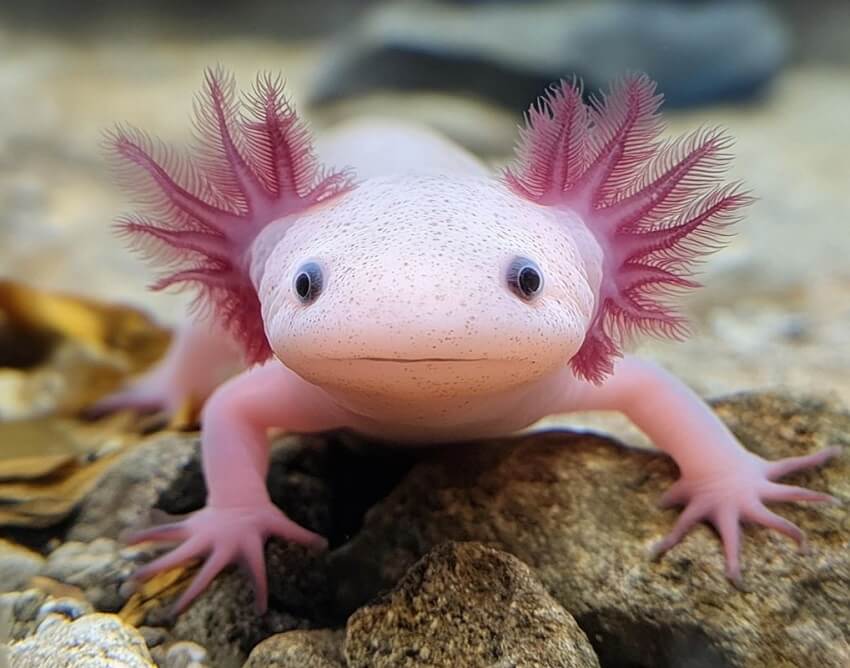
2. How to Accurately Distinguish Between Male and Female Axolotls
To determine the gender of an axolotl, you need to wait until they are fully grown, with a size of about 15 cm (6 inches) or more. It’s impossible to accurately determine their sex when they are still small and not yet mature. Once they are adults, their reproductive organs will be fully developed.
To tell the difference, you need to look at their reproductive organs, which are located next to their hind legs:
- If the reproductive organ has a slightly swollen, raised area, it’s a male.
- In females, there is no swelling. However, females typically have a larger, more prominent body than an adult male.
This is likely the most accurate and commonly used method for determining the sex of an axolotl today. You can refer to these signs if you need to.
3. How Much Does an Axolotl Cost? Where Can I Buy One?
Although they are a unique reptile, a standard axolotl currently sells for around $8–$10 per animal on the market. However, if you buy them in a pair, the price will be lower. The price also depends on many other factors, such as their appearance, size, color, and origin.
However, if you want to buy a beautiful and striking Mexican axolotl with a prominent appearance, the price is not cheap; it can cost several hundred, or even a few thousand, dollars for a single one.
When you want to buy an axolotl, you should go to aquarium stores nationwide. Currently, it’s not too difficult to find this reptile. Alternatively, you can join aquarium forums on Google and Facebook to find them for sale and to learn more about effective care and breeding techniques.
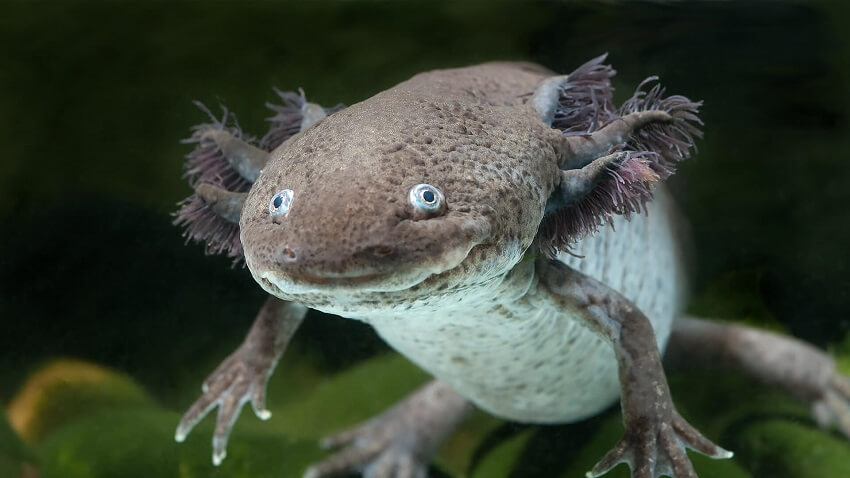
4. Tips for Effectively Raising Axolotls
If you want to raise a few Mexican axolotls, the following tips will be very helpful.
4.1. The Tank
An adult axolotl can reach a size of about 20-30 cm (8-12 inches). Therefore, your tank should have a minimum size of 45 x 35 x 30 cm (18 x 14 x 12 inches). You should create plenty of living space for them in the tank and avoid keeping too many axolotls together in one space. Additionally, this species loves to burrow, so you should line the bottom of the tank with 4-6 cm (1.5-2.5 inches) of sand.
You also need to pay attention to the nitrate concentration in the tank. If this concentration is too high, it will severely weaken the axolotl’s immune system.
4.2. Aquarium Plants
You should decorate the aquarium with many different objects, but you should choose objects that are larger than the axolotls to prevent them from mistaking them for food and swallowing them. The tank should have many soft-stemmed aquatic plants to help them easily cling to things and hide. In addition, these plants also serve as a substrate for them to lay eggs on during the breeding season.
4.3. Temperature
The ideal and most suitable temperature for an axolotl to thrive is 20-25°C (68-77°F). For newborn or young axolotls, you should maintain a temperature of 25-26°C (77-79°F). You need to ensure a stable temperature and not let it change suddenly, as this can severely compromise their health.
In addition, you should change the water regularly because they love to burrow in the sand, which can make the water cloudy quickly.
4.4. Lighting
In the wild, this species primarily lives on the bottom of rivers, where there is very little light. Therefore, when keeping them in an aquarium, you should place the tank in a spot with low light and little to no direct light from a lamp so they can develop steadily.
4.5. What Fish Can Axolotls Live With?
You can choose to keep fish from the Cichlid family or carp in the same tank as this reptile. You can also research other fish that can live with them. You should not keep them with lungfish, as this type of fish can attack axolotls.
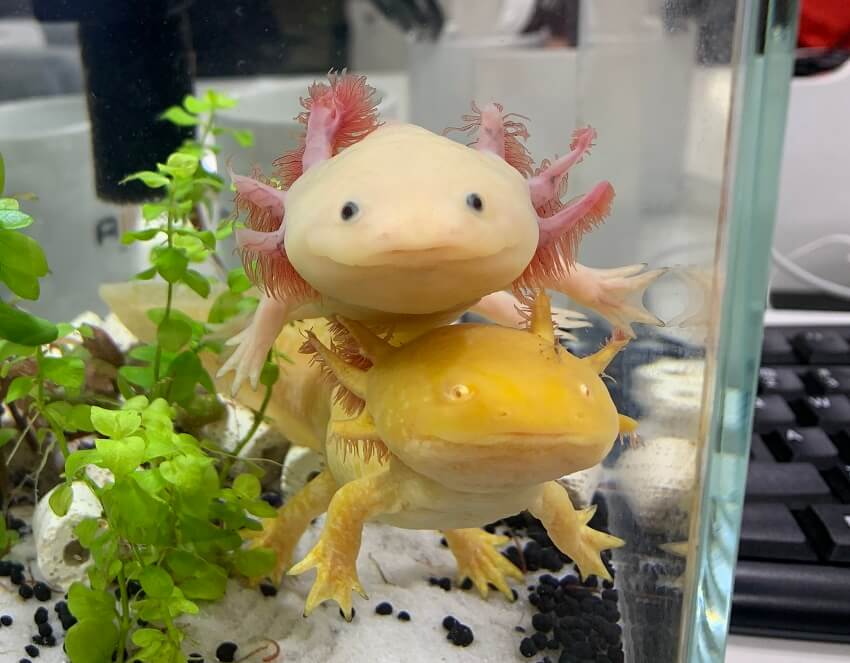
5. FAQs
1. What is an axolotl?
An axolotl is a type of salamander native to Mexico that remains aquatic and retains its larval features throughout its life—a condition called neoteny.
2. Can axolotls be kept as pets?
Yes, axolotls are popular exotic pets due to their unique appearance and low-maintenance care, but they do require clean, cool water and a specific tank setup.
3. What do axolotls eat?
Axolotls are carnivores and typically eat worms, small fish, bloodworms, or axolotl pellets in captivity.
Know All Animals has shared all the information you need to answer your questions about “How much does an Axolotl cost? What do they eat? How do I care for them?” in the most detailed and accurate way. We hope this article has provided you with useful knowledge about this unique salamander. Thank you for reading.
References: https://en.wikipedia.org/wiki/Axolotl

